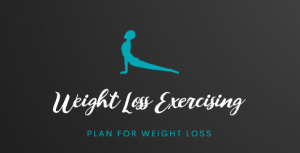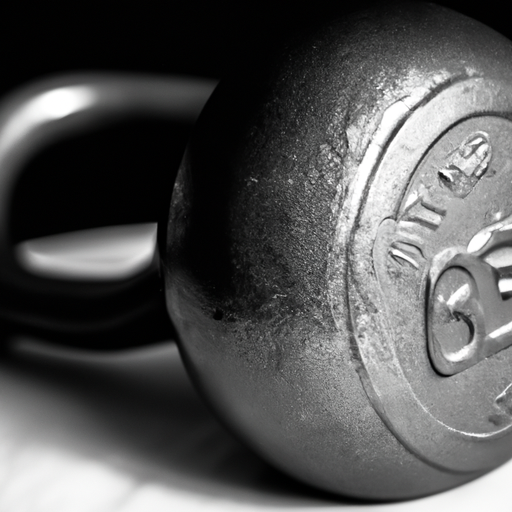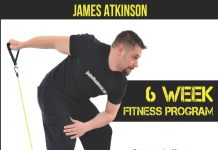We’ve all heard the phrase “no pain, no gain,” but when it comes to working on our abs, is it really necessary to push ourselves every single day? That’s the burning question on many fitness enthusiasts’ minds: Can I do abs everyday? Well, fret not, because we’re here to shed some light on this popular dilemma. In this article, we’ll explore the benefits and potential drawbacks of incorporating daily ab exercises into your fitness routine and help you determine whether it’s the right choice for you. So, lace up your sneakers and join us on this ab-tastic adventure!
Review contents
Benefits of Abs Exercises
When it comes to fitness, one area that often gets neglected is the core. However, incorporating regular abdominal exercises into your fitness routine offers numerous benefits for your overall health and well-being.
Strengthens core muscles
One of the key benefits of performing abs exercises is the strengthening of your core muscles. The core muscles, including the rectus abdominis, transverse abdominis, and external and internal obliques, play a crucial role in stabilizing your spine and pelvis. A strong core can improve your balance and stability, allowing you to perform everyday tasks with ease and reducing the risk of injury.
Improves posture
Sitting for long periods and having a sedentary lifestyle can lead to poor posture, which can cause back pain and discomfort. Regularly engaging in abs exercises can help strengthen the muscles that support good posture, such as the rectus abdominis and the deep abdominal muscles. By improving your posture, you can alleviate muscle imbalances and enhance your overall physical appearance.
Enhances athletic performance
Having a strong core is essential for athletes and those who engage in physical activities. Whether you’re a runner, a cyclist, or a weightlifter, a strong core can provide stability, power, and improved performance. It can also help prevent injuries by properly supporting and controlling movements during various sports and exercises.
Understanding the Abdominal Muscles
Before diving into an ab workout routine, it’s important to understand the different muscles that make up the abdominal region.
Rectus abdominis
The rectus abdominis, commonly referred to as the “six-pack muscles,” is a pair of long muscles that run vertically down the front of the abdomen. These muscles are responsible for flexing the spine and allowing you to perform movements such as crunches and sit-ups.
Transverse abdominis
The transverse abdominis is a deep muscle located beneath the rectus abdominis. It acts as a corset, providing stability and support to the spine and pelvis. Strengthening this muscle can help improve core stability and reduce the risk of lower back pain.
External and internal obliques
The external and internal obliques are two sets of muscles located on the sides of the abdomen. They enable movements such as twisting, bending, and rotating the torso. Strengthening these muscles can enhance overall core strength and stability.
Frequency and Intensity of Ab Workouts
When it comes to ab workouts, finding the right balance of frequency and intensity is essential for optimal results and avoiding potential risks.
Importance of rest days
While it may be tempting to work your abs every day, it’s important to allow your muscles time to rest and recover. Overtraining can lead to muscle strain, decreased performance, and even injury. Aim for including ab workouts two to three times per week, with a day of rest in between each session. This will give your muscles enough time to repair and grow stronger.
Determining the right intensity
For effective ab workouts, it’s crucial to find the right intensity that challenges your muscles without overexerting them. Start with exercises that align with your fitness level, gradually increasing the difficulty over time. Listen to your body and adjust the intensity accordingly. It’s better to perform exercises with proper form and control at a lower intensity than to rush through them with improper technique.
Variety of exercises
To keep your ab workouts engaging and effective, incorporating a variety of exercises is key. Different exercises target different parts of the abdominal muscles. Include exercises that focus on the rectus abdominis, transverse abdominis, and obliques to achieve balanced core strength. Some examples of effective exercises include planks, Russian twists, bicycle crunches, and leg raises.
Potential Risks of Daily Ab Workouts
While regular ab workouts offer numerous benefits, performing them daily without taking necessary precautions can pose risks to your health.
Muscle strain and injury
Doing daily ab workouts without sufficient rest can put excess strain on your muscles, leading to muscle fatigue and an increased risk of injury. It’s important to give your muscles time to recover and repair themselves. If you experience persistent muscle soreness or discomfort, it may be a sign that you are overtraining and should take a break from intense ab exercises.
Overtraining the core
Overtraining the core can lead to muscle imbalances, where the abdominal muscles become overdeveloped compared to other muscle groups. This can affect posture, mobility, and overall functional fitness. To avoid overtraining, incorporate a balanced exercise routine that targets all muscle groups, including the abs.
Neglecting other muscle groups
While having strong abs is desirable, it’s essential to maintain overall muscular balance and symmetry. Neglecting other muscle groups in favor of daily ab workouts can lead to muscular imbalances and potential problems down the line. Make sure to include exercises for other major muscle groups, such as the back, legs, and chest, in your workout routine.
Signs of Overtraining the Abs
It’s important to listen to your body and recognize the signs of overtraining your abs. Ignoring these signs can lead to decreased performance and potential injury.
Persistent muscle soreness
Muscle soreness is a common occurrence after a workout. However, if you find that your abs are consistently sore and take longer than usual to recover, it may be a sign that you are overtraining. Take a break from intense ab exercises, allow your muscles to recover, and consider decreasing the frequency or intensity of your ab workouts.
Decreased exercise performance
Overtraining can lead to decreased exercise performance. If you notice that you’re not able to perform your ab exercises with the same strength or control as before, it may be a sign to take a step back and allow your muscles to rest and repair.
Irritability and mood swings
Overtraining can also have negative effects on your mental well-being. If you find yourself feeling irritable, moody, or experiencing changes in your overall mood, it may be a result of overtraining. Taking a break and implementing adequate rest days can help restore balance and improve your overall well-being.
Alternatives to Daily Ab Workouts
While it’s important to include ab workouts in your fitness routine, there are alternatives to daily ab exercises that can complement your overall goals and prevent overtraining.
Full-body workouts
Instead of solely focusing on your abs, incorporating full-body workouts into your routine can provide a more balanced approach to fitness. Engaging multiple muscle groups in each workout allows for a well-rounded physique and overall strength.
Cardio exercises
Cardiovascular exercises, such as running, swimming, or cycling, not only promote cardiovascular health but also engage the core muscles. These exercises can help burn calories, reduce body fat, and improve overall fitness levels.
Yoga or Pilates
Yoga and Pilates are excellent options for enhancing core strength, flexibility, and overall body awareness. These exercises focus on controlled movements and proper alignment, allowing you to strengthen your abs while also improving flexibility and posture.
Optimal Ab Workout Routine
To maximize the benefits of your ab workouts, consider incorporating the following principles into your routine.
Combination of strength and cardio exercises
To achieve a well-rounded core, include a combination of strength training exercises that target different parts of the abdominal muscles, as well as cardio exercises to burn calories and reduce body fat.
Targeting different ab muscles
To develop a balanced and strong core, it’s important to target all the major abdominal muscles, including the rectus abdominis, transverse abdominis, and obliques. Incorporate exercises that engage these muscles in different ways to ensure overall core strength.
Incorporating rest days
As mentioned earlier, rest days are essential for muscle recovery and growth. Make sure to schedule rest days in between ab workouts to allow your muscles enough time to repair and strengthen.
Tips for a Stronger Core
In addition to regular ab workouts, there are several tips you can follow to enhance the strength of your core.
Maintain proper form
When performing ab exercises, it’s crucial to maintain proper form and technique. Focus on engaging the correct muscles and avoid relying on momentum or improper movement patterns. Pay attention to your alignment, breathing, and overall body position to ensure maximum effectiveness and prevent injury.
Engage in functional movements
Incorporating functional movements into your everyday activities can help strengthen your core and improve overall stability. Movements such as squats, lunges, and carrying heavy objects can engage your core muscles and promote functional strength.
Nourish your body with a healthy diet
A strong core starts from the inside out. Maintain a healthy, balanced diet that includes nutrient-dense foods to support muscle growth and recovery. Adequate protein, healthy fats, and a variety of fruits and vegetables can provide the building blocks your body needs for optimal core strength.
Consulting a Fitness Professional
For personalized guidance and advice on ab workouts, it’s recommended to consult a fitness professional. They can assess your individual fitness level, customize an ab workout plan tailored to your specific goals and needs, and monitor your progress to make necessary adjustments.
Assessing individual fitness level
A fitness professional can assess your current fitness level, including your core strength and overall physical condition. By understanding your starting point, they can develop an appropriate ab workout plan that challenges you without causing harm.
Customizing an ab workout plan
Based on your individual goals, a fitness professional can customize an ab workout plan that includes a variety of exercises targeting the specific muscles you wish to strengthen. They can also provide guidance on the correct form and technique to ensure maximum effectiveness and prevent injury.
Monitoring progress and making adjustments
Working with a fitness professional allows for ongoing monitoring of your progress. They can track your improvements, make adjustments to your workout routine as needed, and provide motivation and support to help you stay on track towards your goals.
Conclusion
Incorporating regular ab exercises into your fitness routine offers numerous benefits, including stronger core muscles, improved posture, and enhanced athletic performance. However, it’s important to find the right balance of frequency and intensity to avoid overtraining and potential risks. By understanding the different abdominal muscles, incorporating variety into your workouts, and listening to your body’s signals, you can achieve a stronger core while maintaining overall physical well-being. Remember to consult a fitness professional for personalized guidance and support, leading you toward an optimal ab workout routine that suits your individual needs.



























